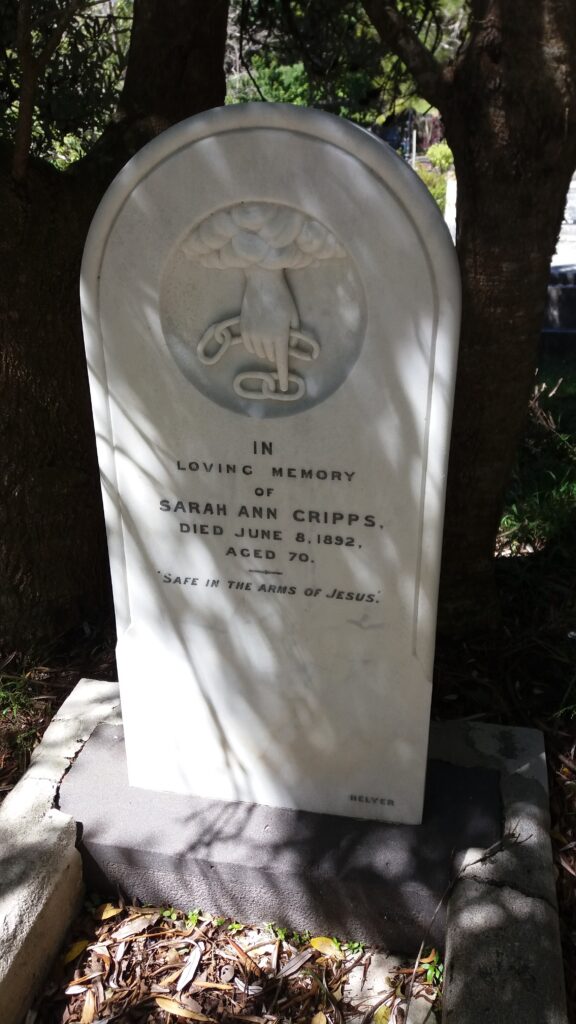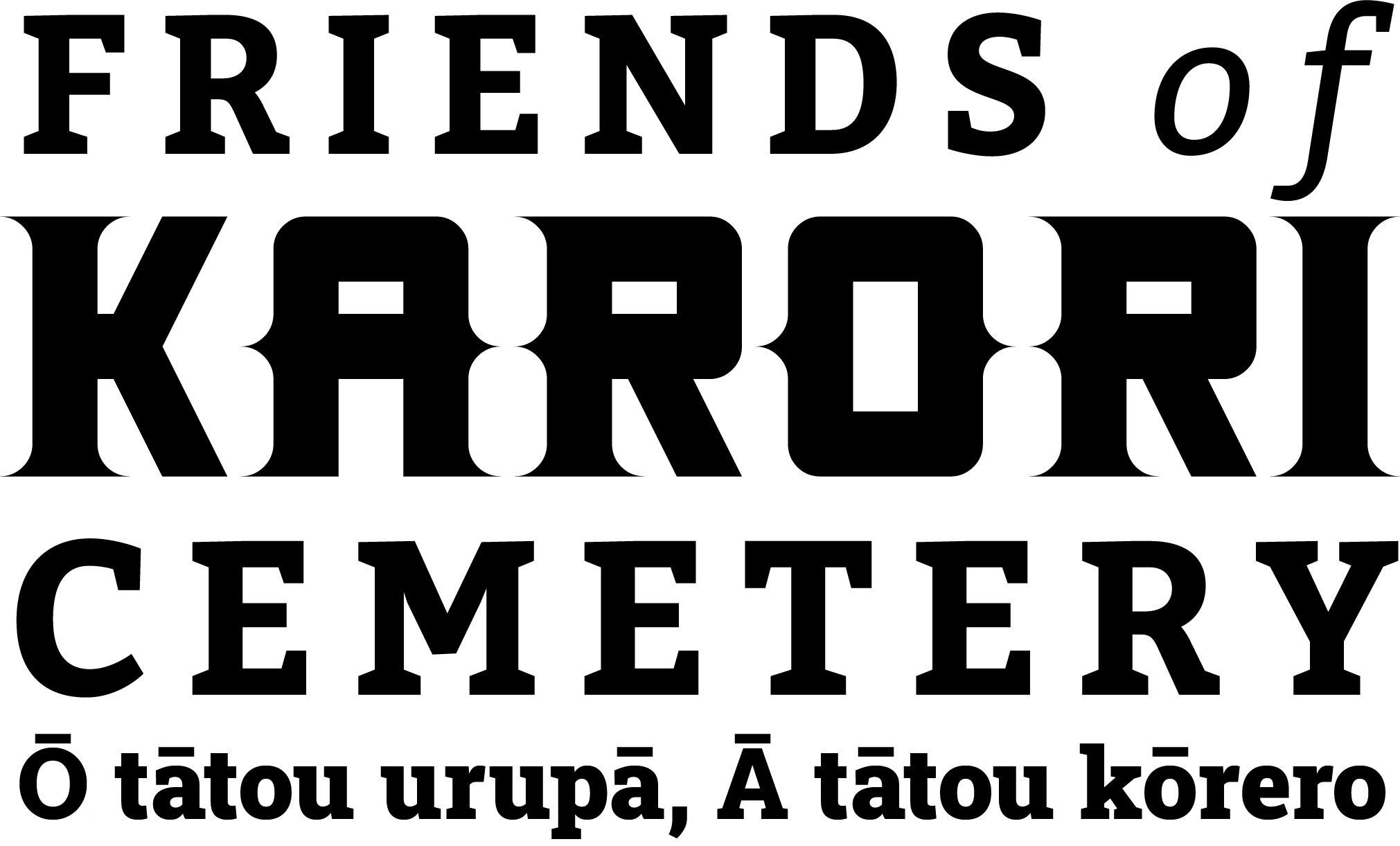The recently cleaned headstone on the plot of Sarah Ann CRIPPS gleams in the shade of tree lined avenues in the first Public section of Karori Cemetery. The simple inscription and design give no indication of the character or experiences of Sarah, who was born in London about 1821. An enterprising young woman she set up her own needlework business before marrying Isaac Cripps, a member of the London Metropolitan Police Force in 1844. They had two daughters and a son before Isaac signed up for a new venture launched by the Southern Whale Fishery Company which had been granted a Royal Charter, giving the company full possession of the Auckland Islands, to set up a ship provisioning and whaling station. The Auckland Islands lie 360 kilometres (220 mi) south of Stewart Island, and are part of the New Zealand subantarctic area. Three ship loads of settlers and supplies landed in 1849, but the settlement had to be abandoned three years later. While living in the harsh conditions of Port Ross Sarah had another daughter. Isaac & Sarah then lived in poor conditions on the shores of Wellington harbour for a couple of years, and had another son. They then moved to the Wairarapa and settled in Whareama, which at the time was a main route between Wellington and Hawke’s Bay. Eventually able to buy 40 acres Sarah ran their house as an accommodation house for travellers north and south, adding a shop and a post office to service the needs of both travellers and the local community. Sarah, while producing more children of her own (she had 10 in total) travelled widely throughout the district to deliver other women’s babies.
Sarah died in Wellington in June 1892. The symbols on the headstone are a broken chain, which can symbolize the death of a family member. It also may refer to the soul being chained to the human body, and with death, that chain is broken. The hand of God reaching down to pluck a chain link means God is taking a soul for himself up to heaven.

